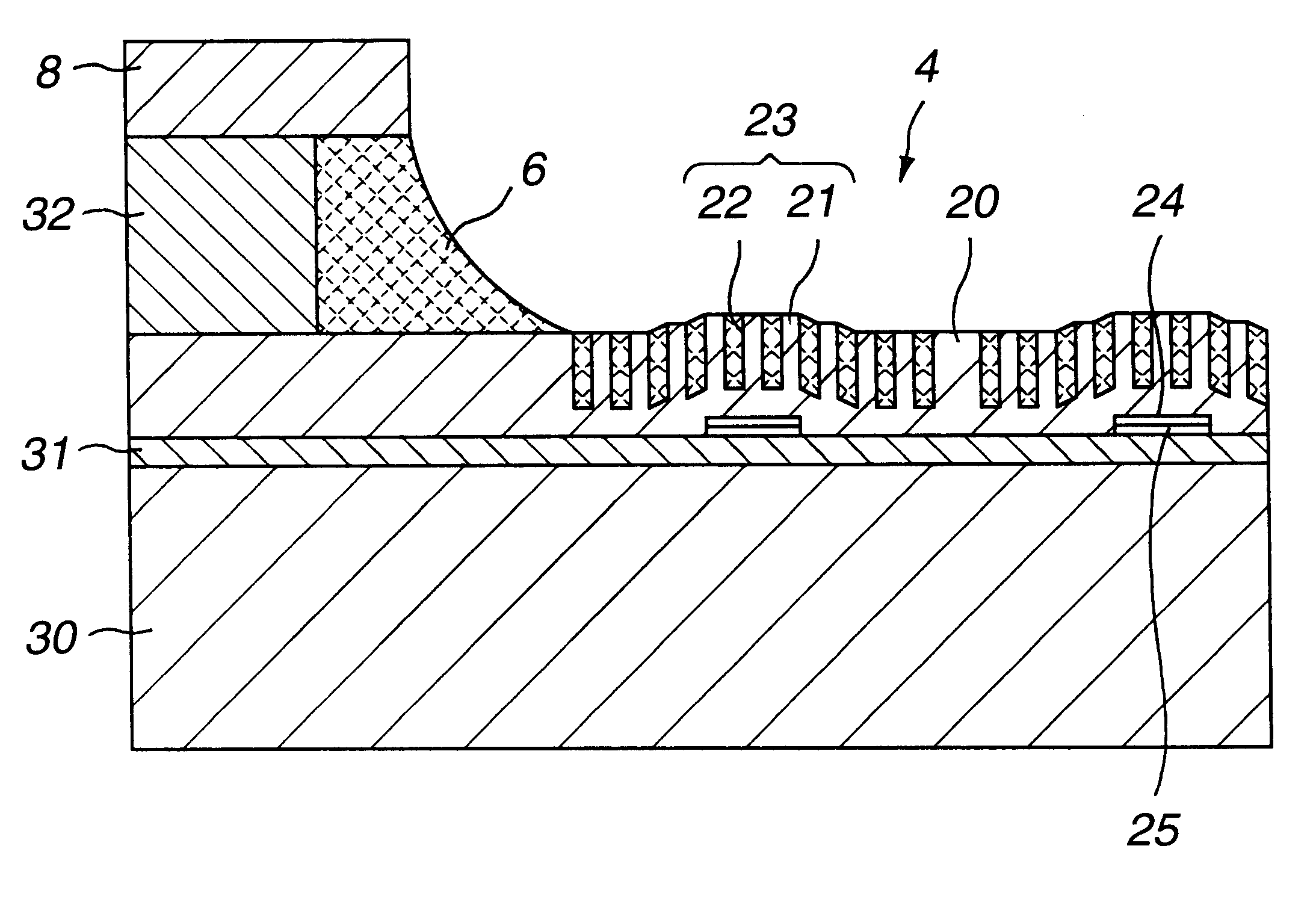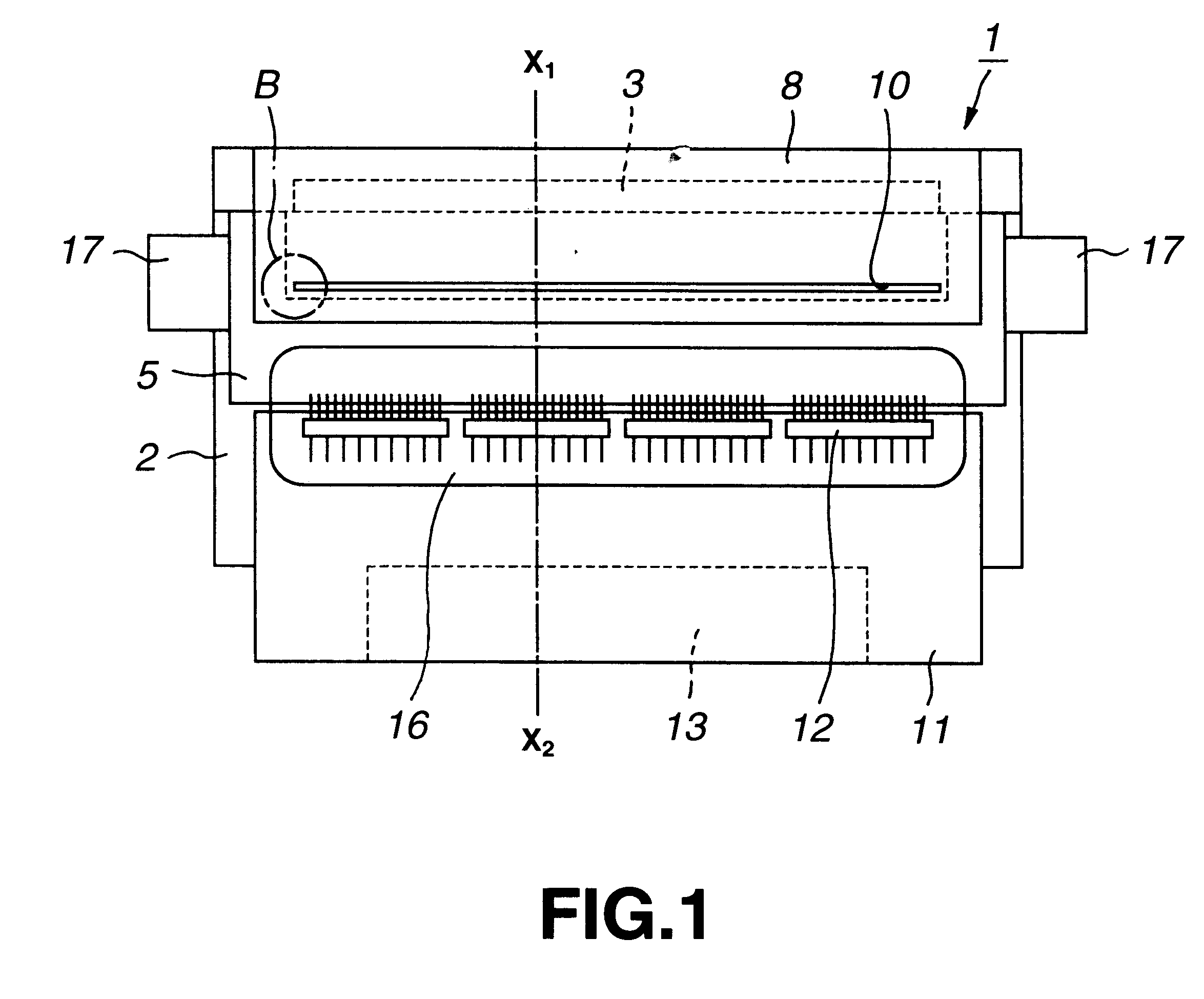Recording apparatus and method
a recording apparatus and a technology of a recording device, applied in the direction of measuring apparatus components, instruments, printing, etc., can solve the problems of large waste, inability to use, and large running costs, and achieve the effect of stabbing ink mists
- Summary
- Abstract
- Description
- Claims
- Application Information
AI Technical Summary
Benefits of technology
Problems solved by technology
Method used
Image
Examples
Embodiment Construction
Nonlimitative examples of printing by the recording apparatus according to the present invention will be described below:
Example Nos. 1 and 2 and Comparative Example Nos. 1 and 2
The printer head constructed as shown in FIGS. 1 to 4 is used to print under conditions shown in Table 1. One pixel is formed from 256 voltage pulses given within 4 ms and pixels are continuously printed at a rate of 2 cm / s. Note that in each of the color inks, the dye concentration is 5% by weight.
The properties of SiO.sub.2 forming the projections in the ink transfer block and those of polysilicone forming the heater are shown in Table 2.
In these examples, the projections of SiO.sub.2 formed in the ink transfer block are all 5 m high. The heat conductivity of SiO.sub.2 is one size larger than that of the ink, so that the heat of the heaters provided on the bottoms of the ink transfer blocks is transferred to the ink surface mainly via the projections of SiO.sub.2.
The time taken for the heat to transfer to ...
PUM
 Login to View More
Login to View More Abstract
Description
Claims
Application Information
 Login to View More
Login to View More - R&D
- Intellectual Property
- Life Sciences
- Materials
- Tech Scout
- Unparalleled Data Quality
- Higher Quality Content
- 60% Fewer Hallucinations
Browse by: Latest US Patents, China's latest patents, Technical Efficacy Thesaurus, Application Domain, Technology Topic, Popular Technical Reports.
© 2025 PatSnap. All rights reserved.Legal|Privacy policy|Modern Slavery Act Transparency Statement|Sitemap|About US| Contact US: help@patsnap.com



